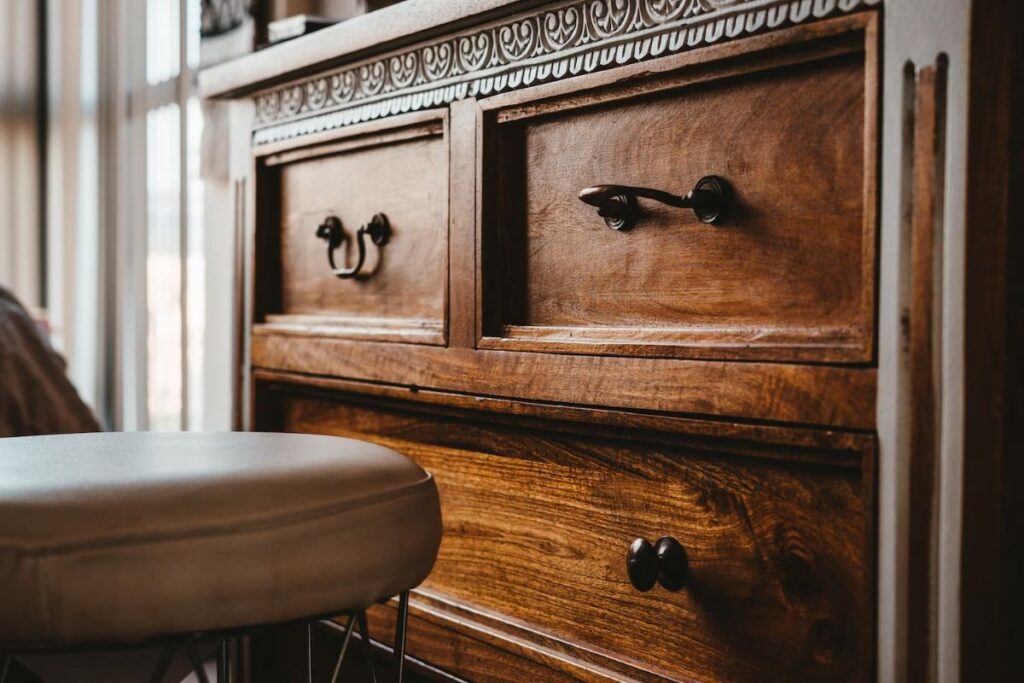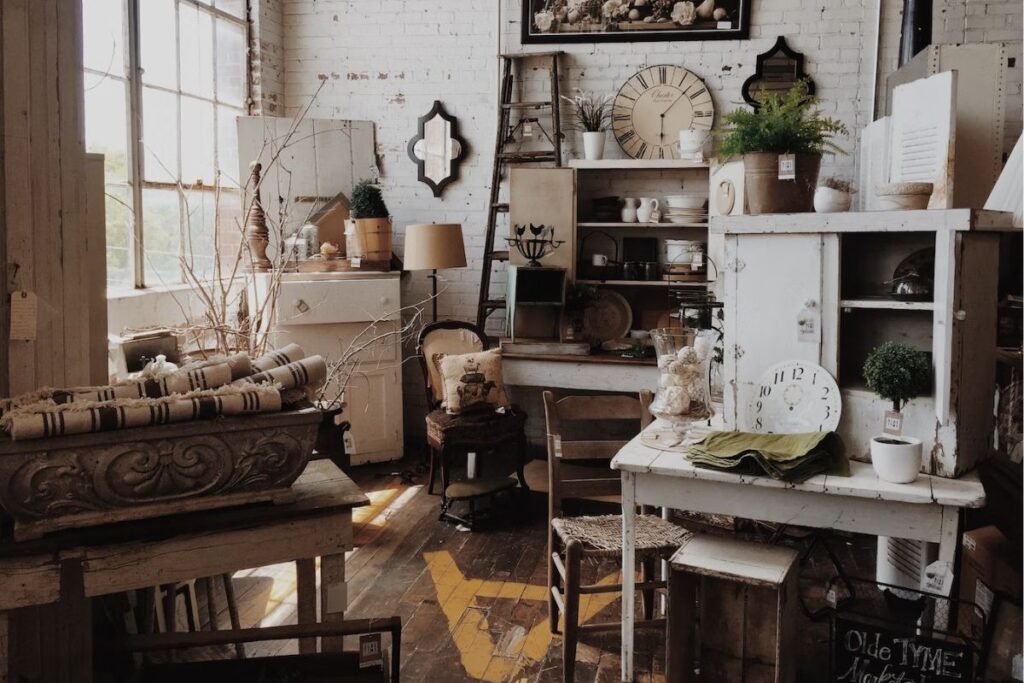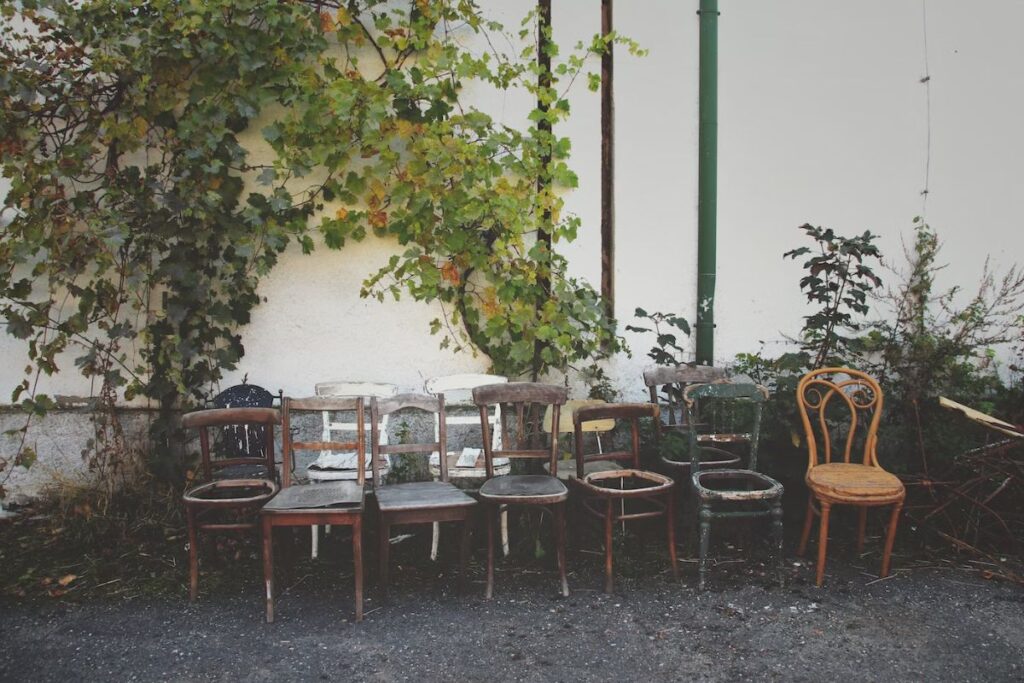From outdated sofas to chairs that have seen better days, it’s all too easy to let old furniture pile up. But what you might not realize is that the way you dispose of these items can have a profound impact on your community and the environment. In a world where a staggering 9 million tons of furniture are sent to landfills each year, it’s time to rethink our approach.
To get rid of old furniture, you can sell it, donate it, recycle it, use curbside pickup, or hire a removal service. Choose the method that fits your needs and is environmentally responsible.
To know more about these options, read on.
Option 1: Selling Your Furniture

Selling your furniture can be a fun and profitable way to pass on your beloved pieces to someone who’ll appreciate them. When it comes to buying furniture, people are always on the lookout for unique and high-quality items that fit their style and budget.
By selling your furniture, you not only make some extra cash but also give others the opportunity to find something special for their home.
Before putting your furniture up for sale, it’s important to consider a few downsizing tips.
Evaluate which pieces you no longer need or want, as this will help you determine what to sell. Take good quality photos of each item from different angles and write detailed descriptions highlighting any special features or flaws. This will attract potential buyers and provide them with all the necessary information.
If you have antique or vintage furniture that needs some love, consider investing in furniture restoration before selling it. Restored pieces often fetch higher prices and appeal to collectors who appreciate the craftsmanship of older items.
Another option is renting out your furniture instead of selling it. Furniture rental services are becoming increasingly popular, especially among those who move frequently or want temporary furnishings for events or home staging purposes.
Before renting out the pieces, it’s a good idea to remove any watermarks to make them even more appealing.
Lastly, if you’re not ready to part with your furniture just yet but don’t have space for it either, consider using a furniture storage facility. These facilities provide secure storage options where your belongings can be kept safe until you decide what to do with them.
Option 2: Donating Furniture

When you’re ready to part ways with your furniture, consider donating it to a worthy cause and experience the joy of transforming someone’s living space with a piece that holds sentimental value.
Not only will you be repurposing furniture, but you’ll also be making a positive impact on the community. Charitable organizations are always in need of furniture donations, and they often have programs that provide furniture to individuals or families in need.
By donating your furniture, you can help those who may not have the means to afford quality pieces for their homes. Additionally, donating furniture can come with its own benefits. Many charitable organizations offer tax deductions for donated items, allowing you to save money while helping others.
You can also explore the option of donating your furniture to a local furniture bank or restoration program. These initiatives work towards refurbishing donated pieces and providing them to individuals transitioning out of homelessness or low-income situations.
Option 3: Recycling Furniture

Consider giving your old furniture a second life by recycling it, turning it into something new, and reducing waste in the process.
What types of furniture can be recycled? Below is a quick list:
Wood: Wooden furniture can often be broken down into pieces and recycled. The wood can be repurposed for other items or used as mulch or biomass fuel.
Metal: Metal frames from beds, chairs, and tables can be melted down and recycled into new metal products.
Certain Plastics: While not all plastics are recyclable, those that are can be melted down and used to make new plastic products.
Upholstery: Fabrics can often be recycled or even composted, depending on the material. However, this often involves a more specialized process.
Glass: Some furniture items like glass tables can be recycled. The glass is melted down and can be used to create new glass items.
There are plenty of upcycling projects that can transform your old furniture into unique and stylish pieces for your home. Not only is this an eco-friendly option, but it also allows you to showcase your creativity and personal style.
One popular way to recycle furniture is through furniture restoration.
By refinishing or repairing the piece, you can bring new life to an otherwise worn-out item. This not only saves money but also gives you a sense of pride in restoring something with history.
Another option is to explore the secondhand market.
Many people are looking for affordable furniture options and buying secondhand is a great way to reduce waste while finding unique pieces for your home. You can sell or donate your old furniture through online platforms or local thrift stores.
If you’re feeling particularly crafty, there are countless repurposing ideas available online. From turning an old dresser into a kitchen island to transforming a wooden door into a headboard, the possibilities are endless.
These projects allow you to give your furniture new purpose while adding character and charm to your space.
How to Prepare Furniture for Recycling
Preparing your furniture for recycling involves a few key steps to ensure that the process goes smoothly and that the materials can be efficiently repurposed.
Start by disassembling the furniture to remove all non-recyclable components such as screws, nails, and any plastic parts that cannot be recycled. If your piece consists of multiple materials, like a wooden frame with a glass top, make sure to separate these materials for individual recycling.
Once the furniture is disassembled, give all surfaces a thorough cleaning to remove any residue or substances that could interfere with the recycling process. Take off any fabric coverings, cushions, and non-recyclable elements to prepare the core material for recycling. If possible, you can also try to repair dents and scratches on your wooden furniture.
Before you transport your furniture to a recycling facility, it’s advisable to call ahead to confirm that they can accept your items and to inquire if any additional preparation is needed.
Option 4: Curbside Pickup and Local Disposal Options

If you’re looking for a convenient way to dispose of your old furniture, why not explore the options of curbside pickup and local disposal?
Many cities offer curbside collection as part of their waste management services. This means you can simply place your unwanted furniture on the curb outside your home, and it’ll be picked up by the designated waste management company.
It’s a hassle-free way to get rid of your furniture without having to transport it yourself.
In addition to curbside pickup, there are also local disposal options available in most communities.
Some cities have landfill disposal sites where you can drop off large items like furniture for responsible disposal. These sites ensure that your furniture is disposed of properly and doesn’t end up in illegal dumping grounds.
Another option to consider is community recycling programs.
Many cities have programs in place that allow residents to recycle their old furniture instead of throwing it away. These programs often partner with local organizations or charities that refurbish or repurpose the furniture for those in need.
Option 5: Hiring Professional Furniture Removal Services

Hiring professional furniture removal services can be a game-changer, providing you with peace of mind and relieving the burden of disposing of your old belongings. While DIY removal may seem like a cost-effective option, it often comes with its own set of challenges.
Not only do you have to find a suitable vehicle for transportation, but also arrange for someone to help you lift heavy furniture. Additionally, there’s the risk of damaging your property or injuring yourself in the process.
When considering the cost of professional services, it’s important to weigh the benefits they offer.
These experts have the necessary equipment and expertise to handle furniture removal efficiently and safely. They will ensure that your items are properly packed, transported, and disposed of in an environmentally friendly manner.
Finding reputable removal companies is crucial to ensure a smooth experience. Look for companies with positive customer reviews and proper licensing and insurance. Ask for recommendations from friends or family who have used such services before.
Before the professionals arrive, take some time to prepare your furniture for removal. Empty out any drawers or compartments and disassemble larger pieces if possible. This will make it easier for both you and the removal team.
Final Thoughts on Responsible Furniture Disposal
In conclusion, it’s crucial that you take the necessary steps to properly dispose of your furniture.
By selling or donating your unwanted pieces, you not only reduce waste but also give someone else the opportunity to enjoy them.
Recycling is another eco-friendly option, ensuring that valuable materials are repurposed and not wasted.
Additionally, many local municipalities offer curbside pickup or disposal options for large items.
If all else fails, consider hiring professional furniture removal services who can efficiently and responsibly handle the task.
Remember, by taking these actions, you’re contributing to a cleaner and more sustainable future for all.

